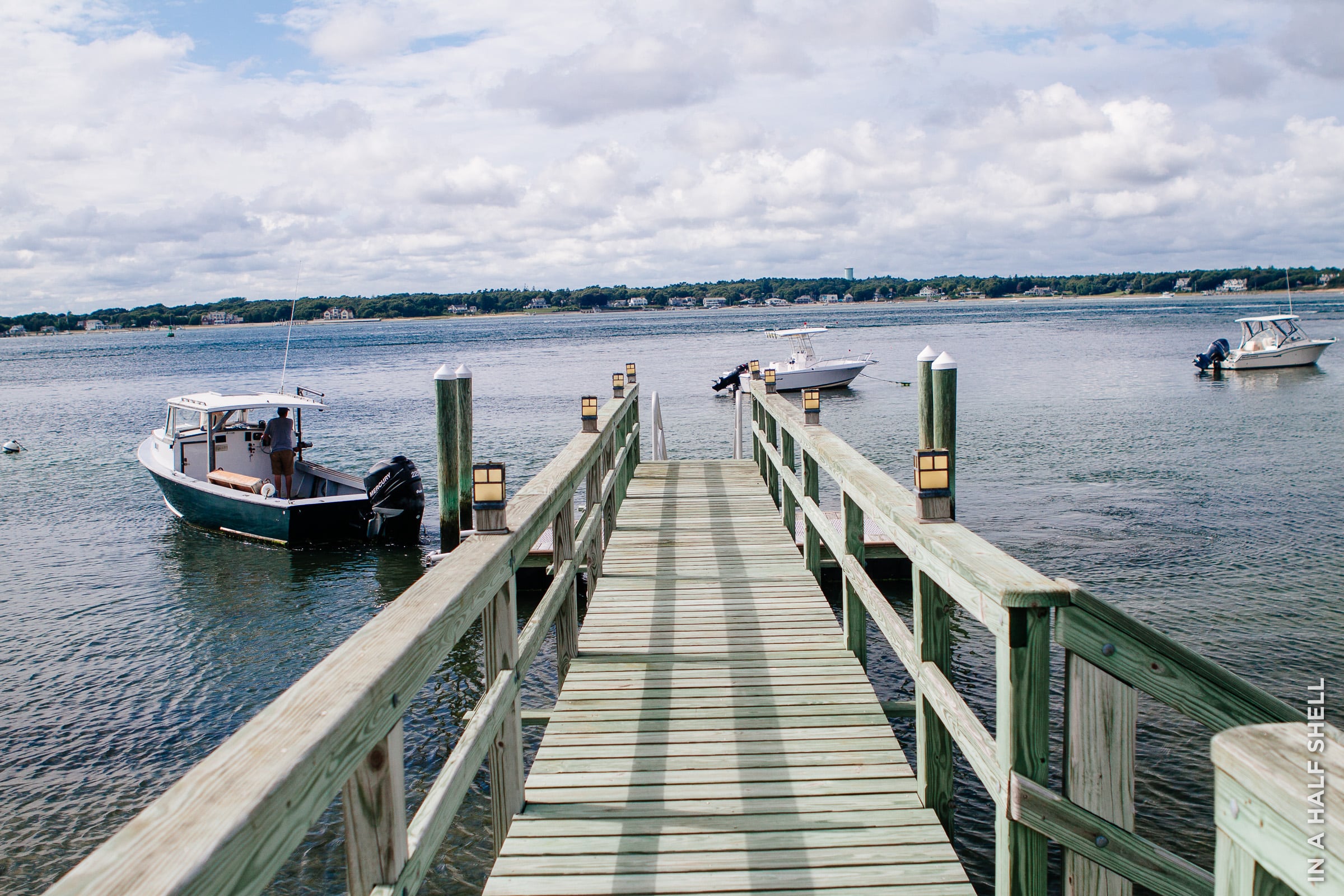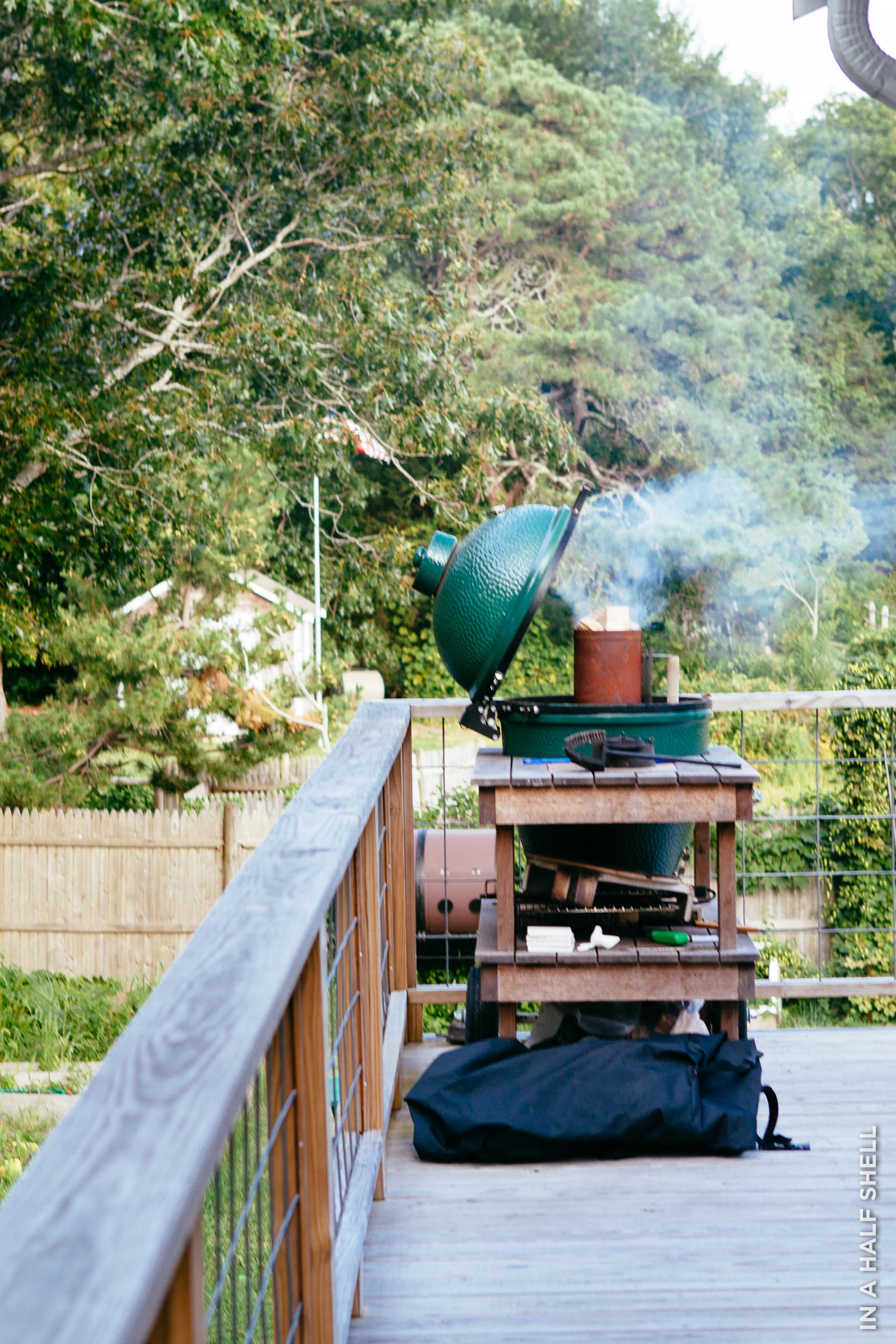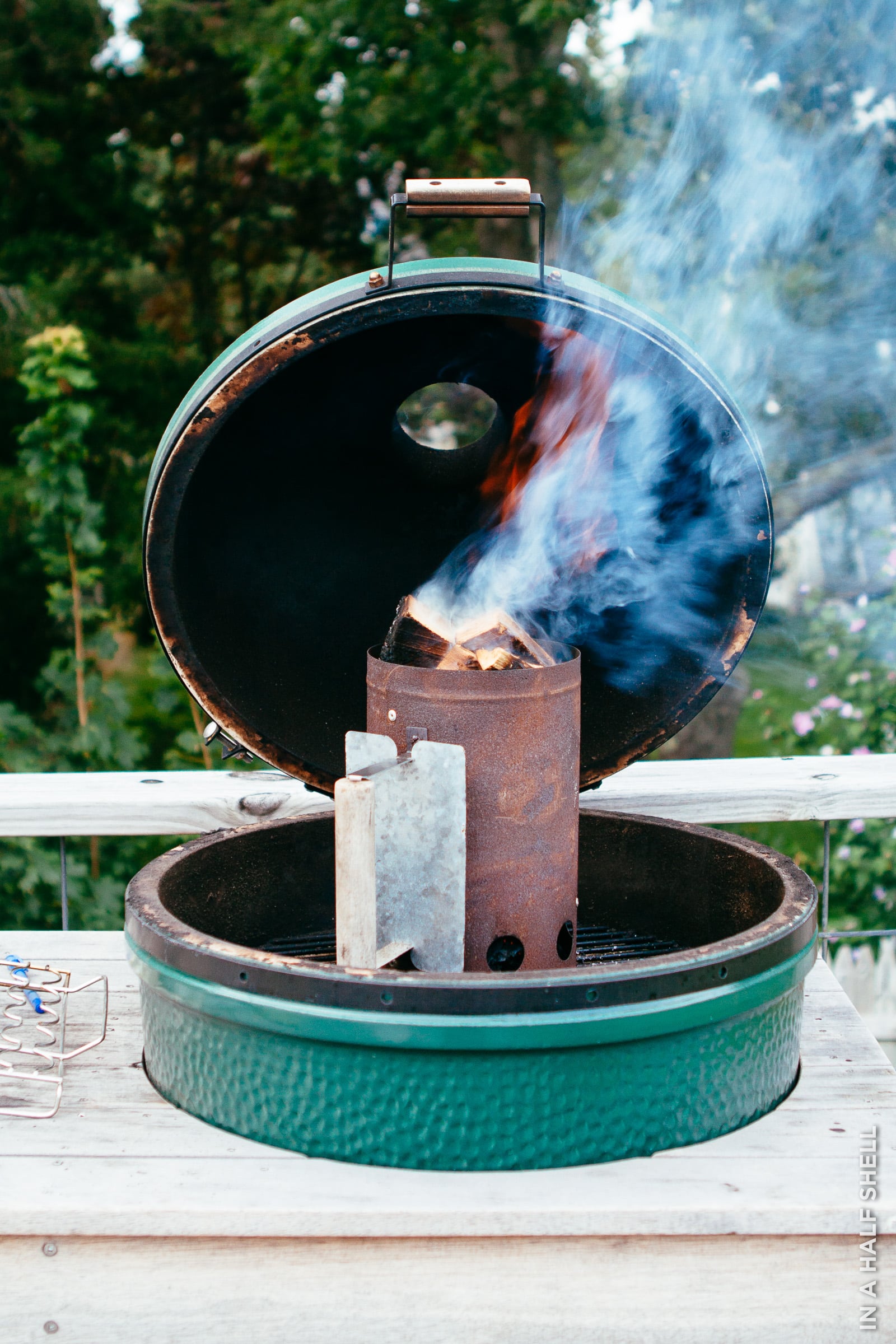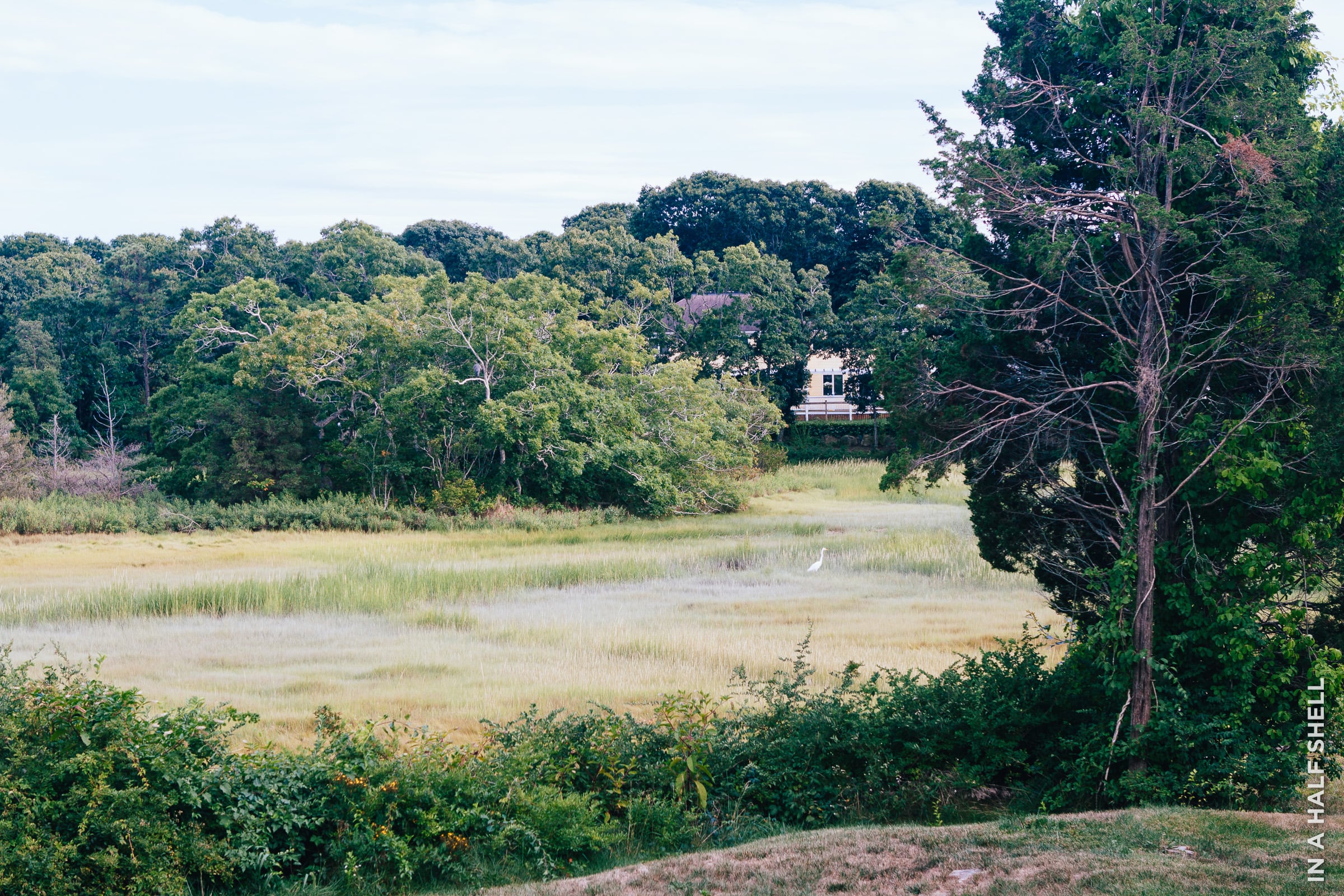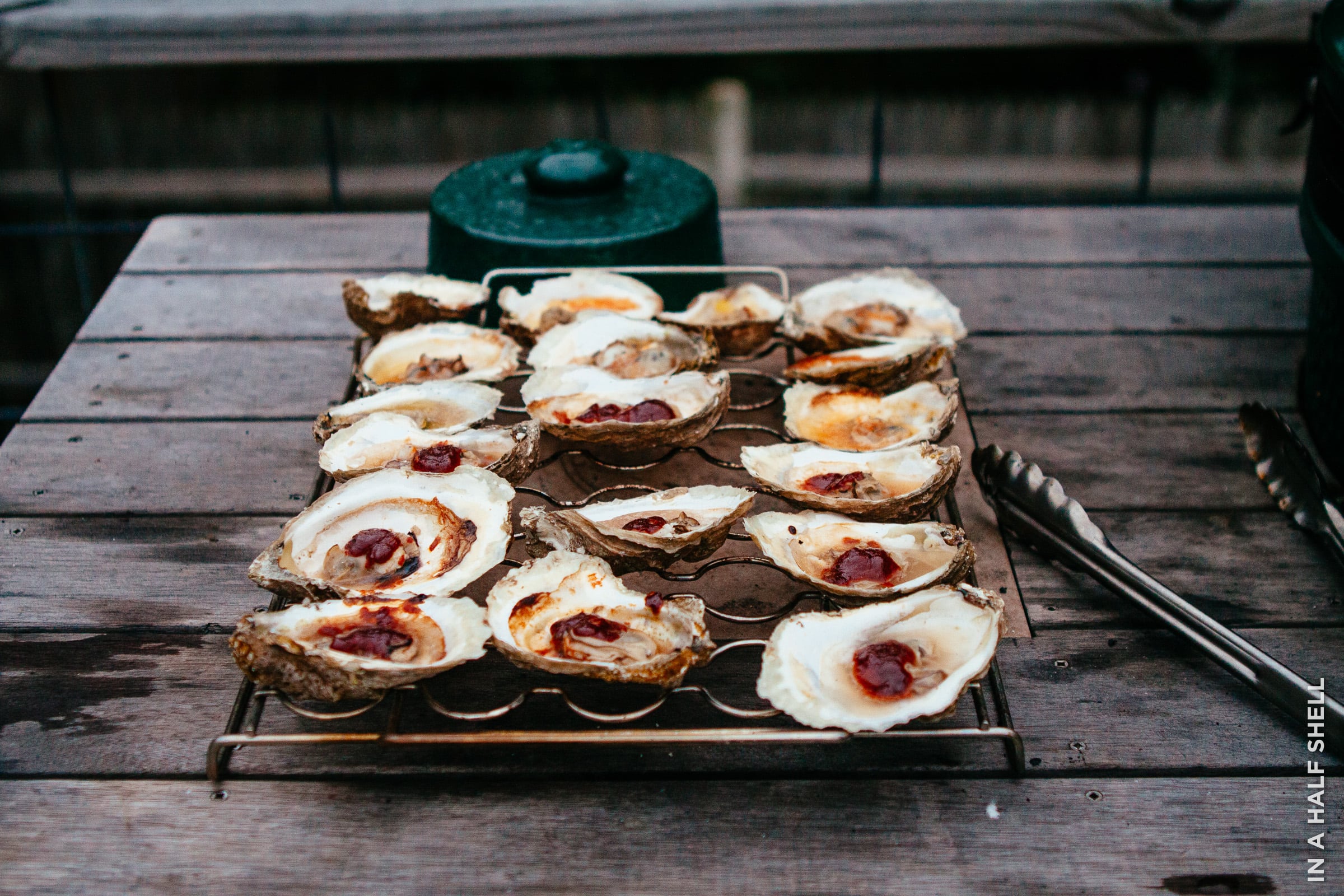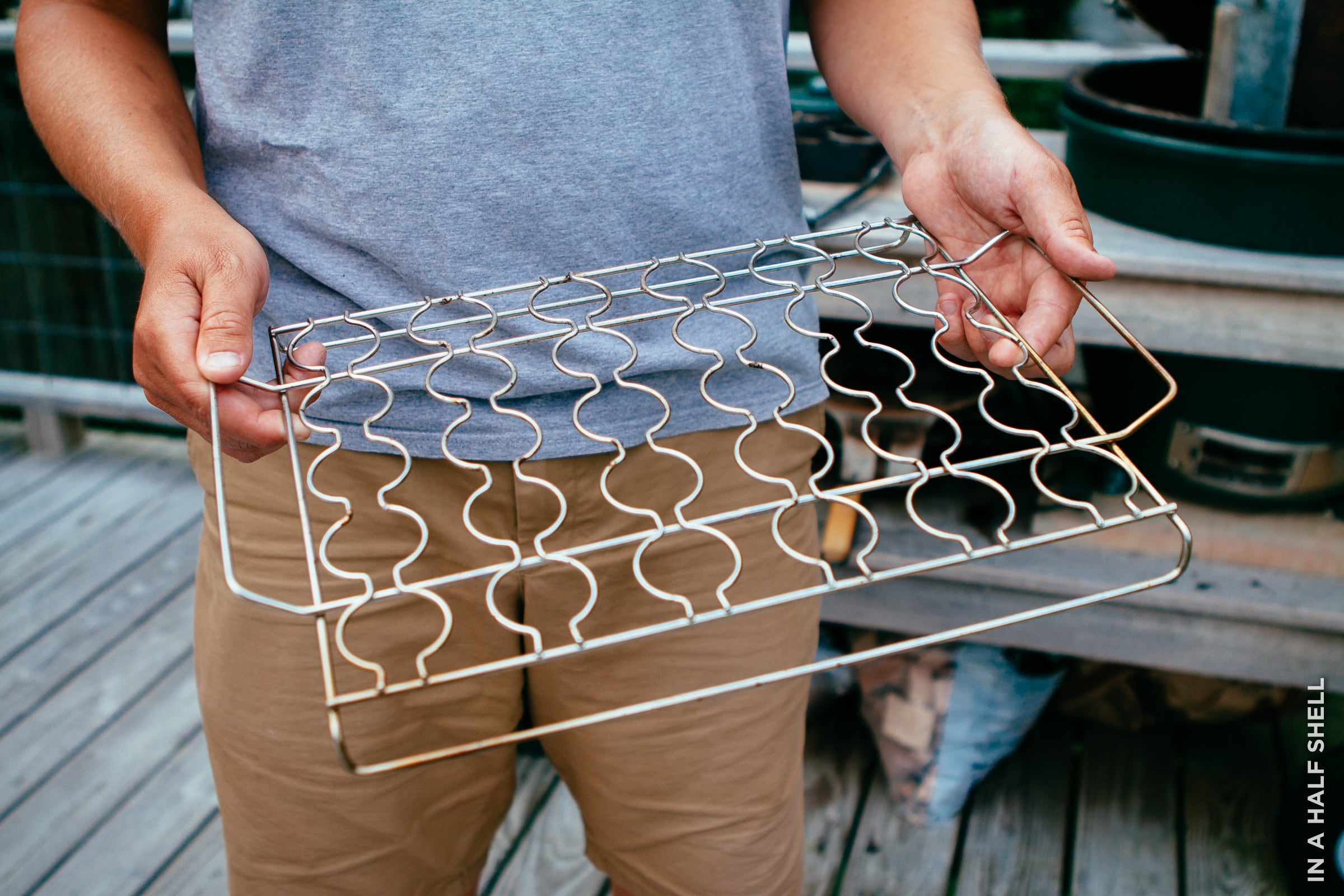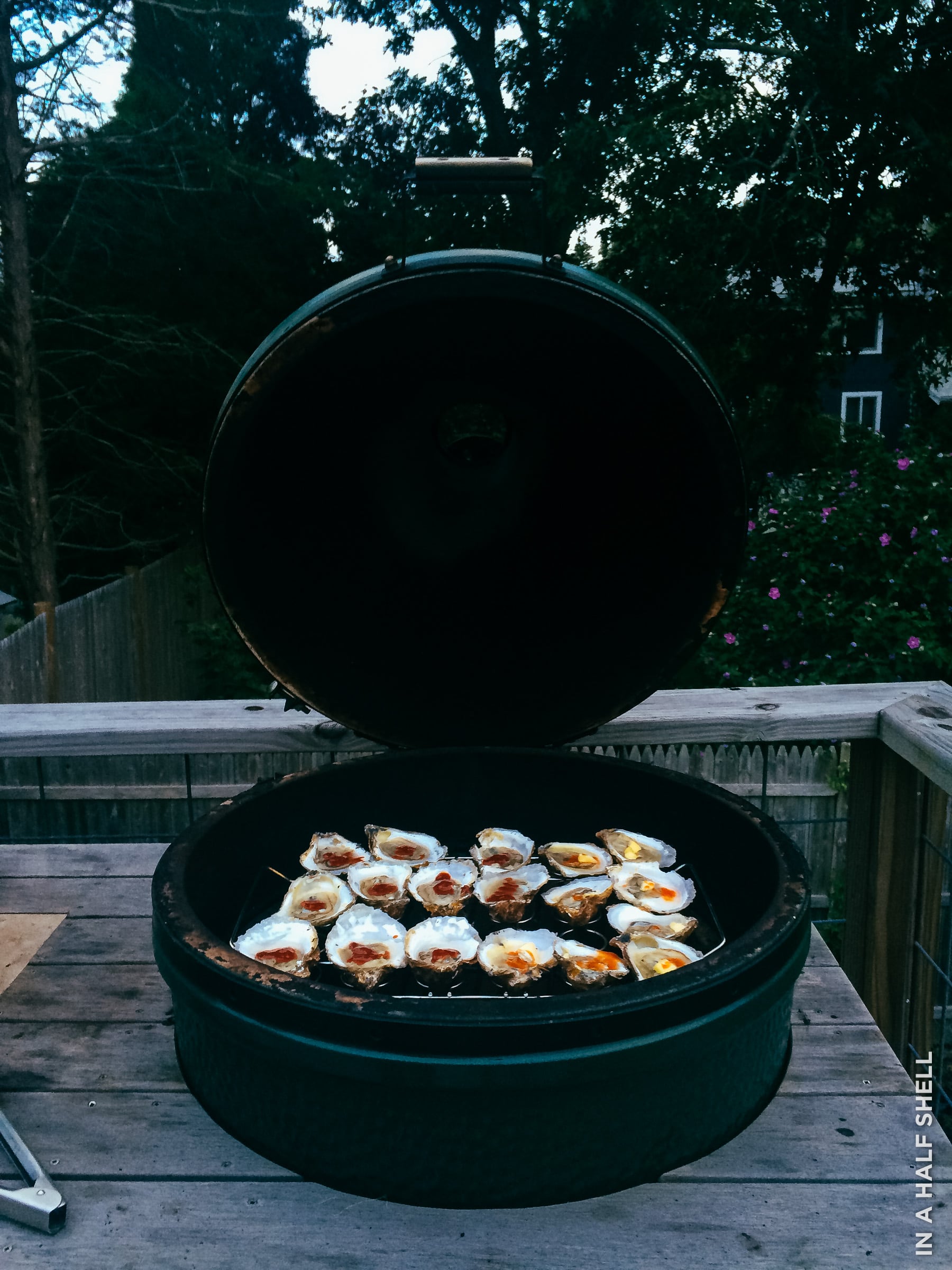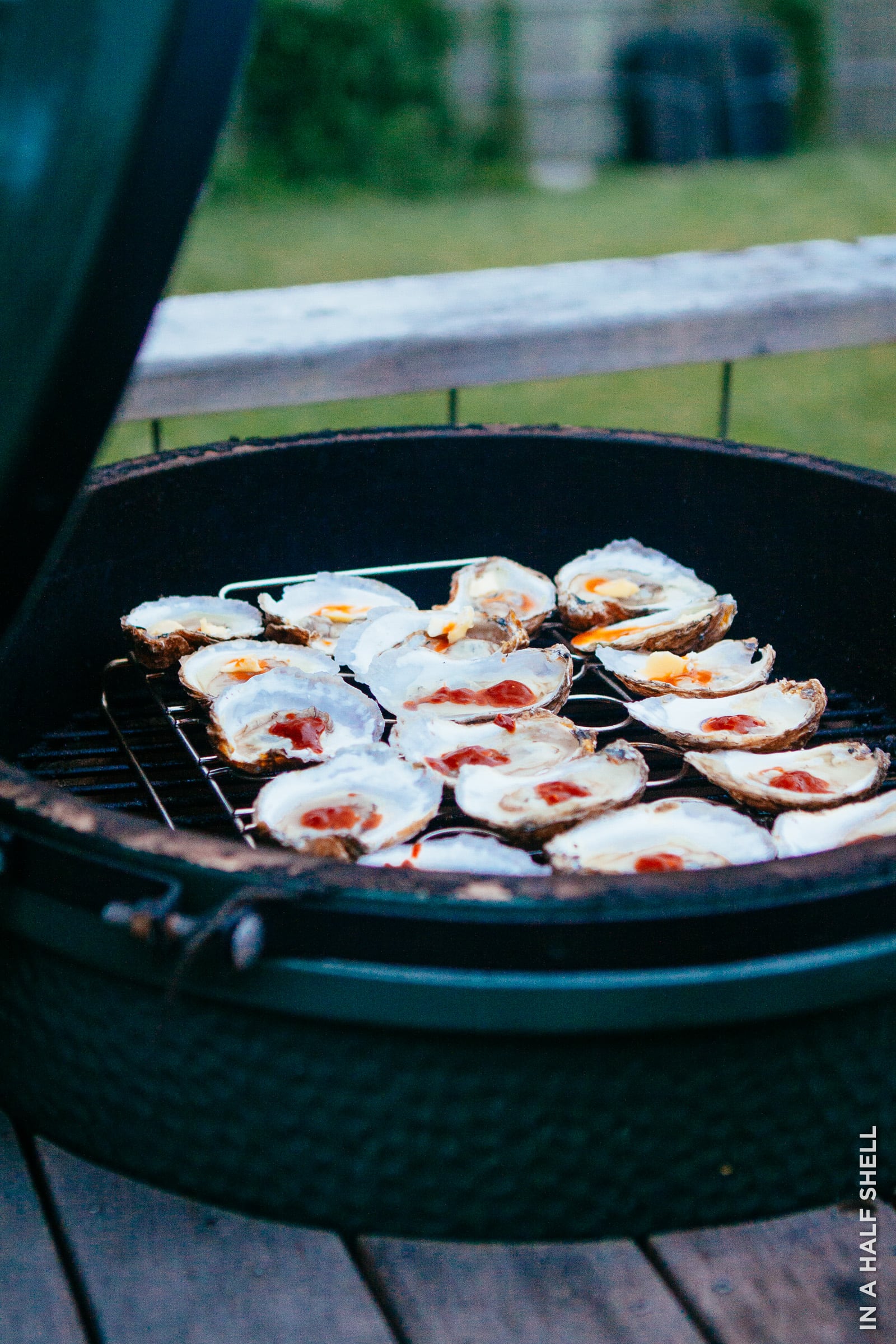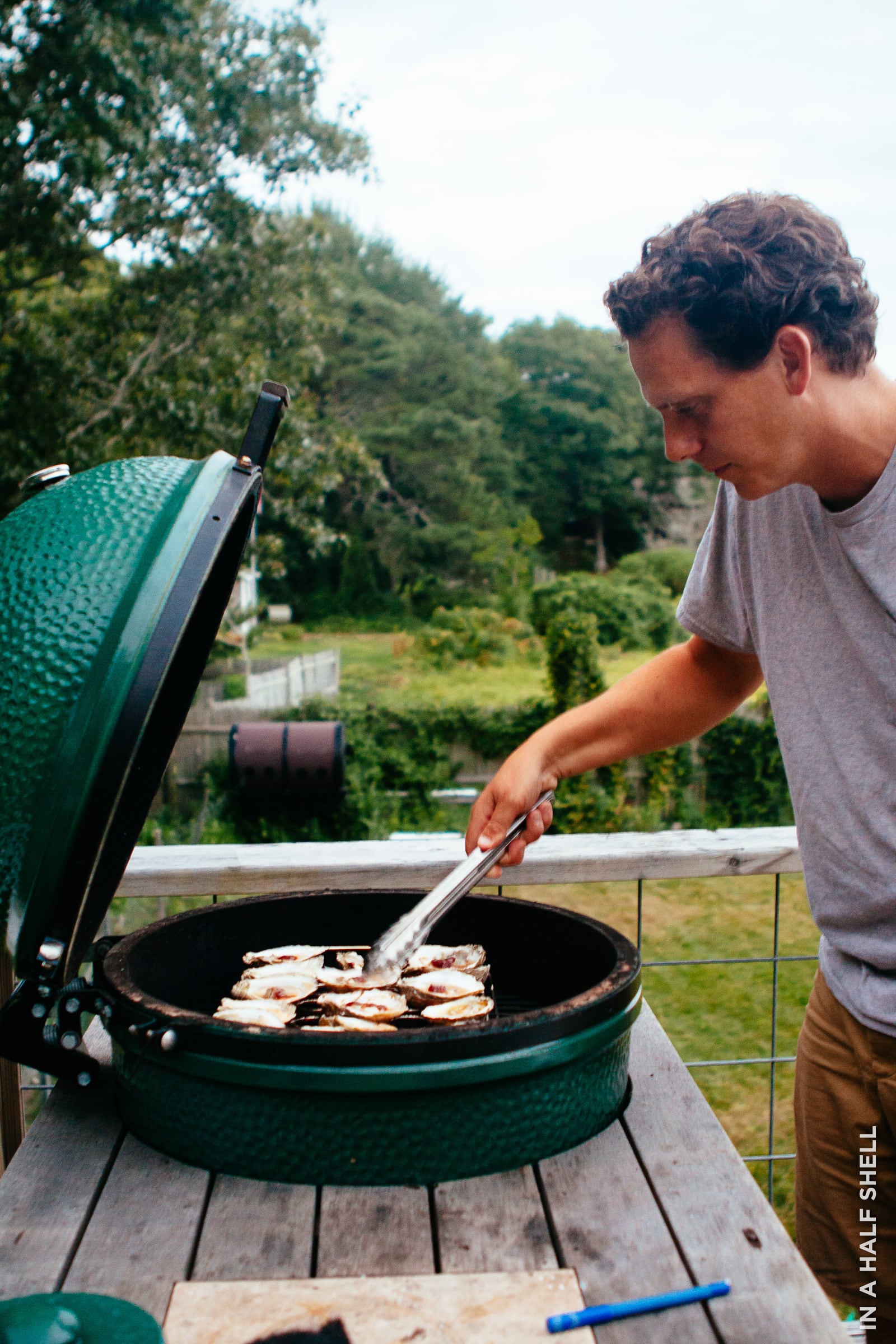Cape Cod Oyster Tour: Debut of Monks Cove Oysters
Last month, I took you guys for a ride around the Eastern Shore of VA. Today, I want to return back to my summer jaunt across Cape Cod (while it's nice and frigid outside) and give you a quick tour of Monks Cove Oyster Farm, a wonderful new oyster venture by Pat and Jenny Ross.
Becoming Oyster Farmers
Monks Cove Oyster Farm is currently the "side hustle" of Pat and Jenny Ross, a sweet couple who dreamt up an unprecedented idea: to revitalize oyster culture in Bourne. Oyster farming was alive and well there about a century ago, but all of that went kaput as soon as dredging the Cape Cod Canal started in 1909.
2014 marked the centennial anniversary of the opening of the canal, which serendipitously coincided with Monks Cove Oyster Farm's first harvest. Of course, like many great ideas, getting to this point wasn't easy. But hold up. Where did the idea of starting an oyster farm even come from? An excerpt from the Monks Cove Oyster Farm sums it up perfectly:
Living on Cape Cod, we dreamed of making a living locally and sustainably. Our first thoughts of starting an oyster farm came from a menu item at the historic Washington D.C. oyster bar, Old Ebbitt Grill. When we learned that the oysters they were serving were grown less than a mile from our home in a neighboring town, we were blown away. Our curiosity sparked, we began to learn everything there was to know about oyster farming.
The Rosses learned by reading lots of books, taking Shellfish Farming 101 workshops at Roger Williams University, and volunteering at an offshore farm in Buzzards Bay. Many aspects of this venture spoke to their respective strengths. Pat is super handy (you should see this massive renovation of their home) and Jenny is delightfully crafty. Together, they were able to build their own gear, restore their own boat, and launch a beautiful new brand.
The most difficult and ambiguous part of all this was probably the application process... or lack there of. Because no other farms existed in their area at the time, there were no regulations or any type of application process available. The Rosses worked patiently with the town to create the appropriate regulation necessary for their business to get off the ground. It took a year of nicely poking and pushing before the Department of Natural Resources helped grant them what they needed.
Monks Cove Oyster Farm is a subtidal oyster farm located just off of Toby's Island in Bourne, MA. Their primary gear consists of rack and bags, which are lifted and lowered by a boat-based pulley system. Their oysters are always submerged under 7-10 feet of water, regardless of the tide. To get to their private plot of oyster goodness, we had to approach by boat. Pat and Jenny untied their new work boat, the "Aw Shucks!" and off we went. The commute to the site was pretty smooth today, but Buzzards Bay is known to get a little rough at times. When the Rosses first started, they only had a row boat to their disposal. Umm, thank goodness for these major upgrades!
Unlike most farms that I've been to, Monks Cove Oyster Farm is pretty well hidden. Their water lease was only marked by a few discrete buoys. Pat hooked his winch to one of the cage lines and slowly lifted it out of the water. Once on deck, he lifted open the cage lid and I felt like we had discovered sunken treasure. The shells glistened with golden hues. Actually, Jenny explained that a type of sponge coated many of the oyster shells, which gave them a slick, mustardy sheen. I was also perplexed by the furry reddish exterior, but then as I took a closer look, I realized that the cage was covered with algae growth and other forms of biofoul. Although the frills were quite stunning, I knew that too much of this stuff would eventually suffocate the oysters inside.
Many oyster farmers are constantly plagued by biofoul, and keeping the oysters and gear clean is a tedious, time-consuming job that never ends. In the world of aquaculture, timing and technique can be the difference between a thriving, live oyster and a dead one. Oh, and every location is a little different. For newcomers like Pat and Jenny, the challenges have only just begun.
Special Update / Commentary from Pat Ross
Actually, just after your visit, we started to notice that many of the shells in our 2012 crop were brittle. It turned out to be a boring sponge infestation. Basically, the sponge settled on the shell and bores tiny holes, eating away and compromising the shells. It isn't an issue, unless it settles on the hinge, because that's that folks use as leverage to shuck.
The solution turns out to be rather simple, and growers use it to control all sorts of biofouling. You make a super-saturated saline solution (keep adding salt until a potato floats). You submerge the oysters in the solution for a few minutes and then let them air dry. As long as the shell has not been too compromised, the sponge dies and the oyster goes on with it's life.
Boring sponge is now our sworn enemy, but we are able to control it. So if you ever see an oyster with a series of tiny holes in a pattern across the shell, it's most likely boring sponge.
After getting a good look at the cages, we headed over to the custom-built Monks Cove Oyster Farm "Shuck Shack," which resided on the opposite side of Toby's Island. The bright yellow cube sat against a lush blue-green background like a golden egg in the woods. Pat and Jenny build this floating workstation to provide a stable place to clean and sort their oysters, but today, we decided to use it as an oyster tasting room and photo studio. Random fact: my Instagram of my Monks Cove Oyster #Shellfie is still one of my most popular ever!
Monks Cove Oyster Tasting
It's very exciting to be one of the first to try a new oyster on the market—especially one that is grown by individuals who are just starting out in the business. Pat and Jenny carefully shucked a few and I decided to help out as well. I had a bit of trouble keeping some of the hinges intact. The overall shell integrity was a bit weak (probably due to the sponge and subtidal upbringing), but I'd imagine that with a little more grow out time or tumbling, they'd be just fine. The fluting on some of the cup sides were really stunning.
After a brief photo shoot, it was time to get down to business. I held a perfectly shucked Monks Cove Oyster to my lips and slurped it down. The cool, briny taste of the bay splashed against my palate. Monks Cove Oysters are grown in water that's around 29 ppt salinity, which I'd say is medium-high salinity. The texture of the meat was surprisingly dense and robust, especially in August! These oysters possessed a smooth earthy minerality with a "sea bean" finish. I'd be very curious to taste them again, now that oysters are in their prime.
Back at the house, we grilled up the rest of the oysters using Pat's Big Green Egg, a curious cooking device shaped like an enormous ostrich egg. The oysters were pretty tasty BBQ-style, but I think I still prefer them raw. Monks Cove Oysters can be found at The Lobster Trap, a neighborhood pub that serves up great ambiance, seafood and local brews.
Special Thanks
Thank you so very much to Pat and Jenny Ross for their hospitality! So happy to we were finally able to meet. :-)
To learn more about Monks Cove Oyster Farm and general Cape Cod oyster culture, be sure to check out this wonderful article written by Julie Mirocha for Edible Cape Cod. Oh, and do follow Monks Cove on Instagram!


















